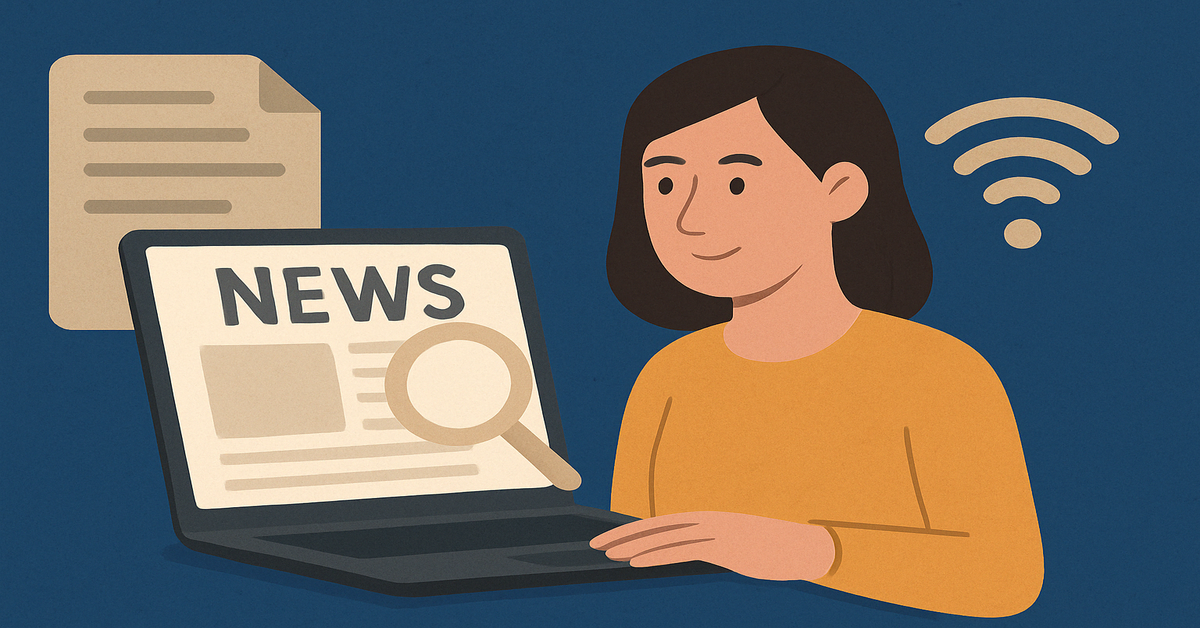In an era dominated by information overload and real-time updates, the concept of “found news” has taken on a powerful and sometimes unpredictable role in shaping public opinion, awareness, and even policy. Unlike scheduled press releases or orchestrated media events, found news refers to information that emerges incidentally or unexpectedly and gains traction organically, often through social media, citizen journalism, or leaks. This article delves into the phenomenon of found news, exploring its definition, origins, implications, and how it is transforming the global news landscape.
Understanding Found News
What Is Found News?
Found news refers to the unplanned, accidental, or organically discovered pieces of information that become newsworthy without prior intention. It is not generated by traditional media outlets or government agencies in a controlled setting. Instead, it often surfaces through:
- User-generated content (photos, videos, posts)
- Leaks and whistleblower revelations
- Unexpected events captured in real-time
- Data anomalies or analysis by independent researchers
The Evolution of News Consumption
Historically, news was consumed via newspapers, radio, and television. These were curated and filtered sources, often with clear editorial oversight. With the internet and, more specifically, social media platforms, anyone can become a news source. This shift has democratized information dissemination but also led to challenges in verification and context.
Sources and Catalysts of Found News
Social Media Platforms
Social media platforms like Twitter, Facebook, TikTok, and Instagram are hotspots for found news. A single tweet or video clip can go viral, attracting the attention of mainstream media outlets and prompting broader coverage.
Mobile Technology
The proliferation of smartphones has made it possible for individuals to capture and share newsworthy moments instantly. This real-time capability has brought major news events to light, including police brutality, protests, and natural disasters.
Whistleblowers and Leaks
Whistleblowers play a pivotal role in found news. From Edward Snowden’s NSA revelations to anonymous leaks on corruption, these disclosures have reshaped public discourse and legal frameworks.
Data Journalism and Open Source Investigation
Independent researchers, data analysts, and open-source investigators often unearth critical findings buried in public records, satellite images, or large datasets. Their work has exposed war crimes, environmental violations, and corporate fraud.
The Impact of Found News
Political Ramifications
Found news can disrupt political narratives, prompt investigations, and alter election outcomes. Unplanned revelations often force public officials to respond, sometimes with policy changes or resignations.
Social Movements
Movements like #MeToo, Black Lives Matter, and climate activism have been propelled by found news. Viral posts and videos served as rallying points, generating mass awareness and mobilization.
Journalism and Media Ethics
The rise of found news challenges traditional journalism to adapt. Reporters now compete with citizen journalists and must verify viral content quickly. Ethical concerns include:
- The use of graphic or sensitive material
- The privacy of individuals captured unexpectedly
- Source verification and authenticity
Crisis Response and Humanitarian Aid
Found news often plays a life-saving role during crises. Real-time updates about natural disasters, conflict zones, or missing persons can guide emergency services and aid organizations.
Challenges of Found News
Misinformation and Disinformation
Not all found news is accurate. The speed of dissemination often outpaces verification, leading to false or misleading narratives gaining traction.
Context and Interpretation
Without proper context, even factual content can be misinterpreted. A photo or clip might lack the background needed for viewers to understand its significance accurately.
Algorithmic Amplification
Social media algorithms prioritize engagement, not truth. This can lead to the amplification of sensational but dubious content over sober, well-researched journalism.
Legal and Ethical Boundaries
Publishing found news raises questions about legality and morality. Issues include:
- Copyright and ownership of user-generated content
- Consent of those captured on video
- National security implications of leaks
Opportunities in Found News
Empowering Citizen Journalism
Found news empowers ordinary individuals to participate in journalism. This grassroots approach often captures stories that mainstream media overlook.
Diversity of Voices
Mainstream media often represents a narrow range of perspectives. Found news brings diverse voices to the forefront, highlighting issues affecting marginalized communities.
Speed and Reach
Found news travels fast and can reach global audiences instantly. This immediacy is crucial during emergencies or major public events.
Collaboration and Verification
Newsrooms are developing tools and frameworks to verify found news, including:
- Reverse image searches
- Metadata analysis
- Geolocation tools
Collaborative efforts like Bellingcat and Storyful demonstrate how technology and expertise can authenticate grassroots content.
Case Studies in Found News
The Arab Spring
The 2010–2011 Arab Spring showcased the power of found news. Protesters used social media to document uprisings, bypassing state-controlled media and drawing international attention.
George Floyd’s Murder
A bystander’s video of George Floyd’s death in 2020 sparked global protests and renewed discussions about systemic racism and police reform. This was a seminal moment in found news history.
Panama Papers Leak
The 2016 Panama Papers leak exposed offshore tax havens used by the wealthy and powerful. It led to political resignations, investigations, and reforms in financial transparency.
How Newsrooms Are Adapting
Integrating User-Generated Content
News outlets now regularly incorporate user content, using dedicated teams to vet and contextualize submissions.
Training in Verification
Journalists receive training in digital forensics and verification to responsibly use found news.
Ethical Frameworks
Organizations are developing ethical guidelines for the use of found news, addressing privacy, safety, and representation.
The Role of AI in Found News
Content Discovery
AI tools help identify trending topics and relevant content across platforms.
Deepfake Detection
As synthetic media becomes more prevalent, AI is essential in detecting deepfakes and manipulated content.
Automated Translation and Transcription
AI aids in translating and transcribing user-generated content, making it accessible to global audiences.
The Future of Found News
Increased Collaboration
Expect greater collaboration between professional journalists, technologists, and citizen reporters to verify and contextualize found news.
Education and Literacy
Media literacy campaigns will be essential to help the public discern credible information from noise.
Policy and Regulation
Governments and platforms may introduce regulations to address the ethical and legal issues surrounding found news.
Technology-Driven Verification
Advancements in blockchain, metadata analysis, and geolocation will aid in authenticating sources.
Conclusion
Found news is a powerful force in the modern media ecosystem. Its ability to uncover hidden truths, empower marginalized voices, and spark global movements is unmatched. However, it also brings challenges related to accuracy, ethics, and interpretation. As technology continues to evolve, so too will the frameworks that support responsible and impactful use of found news. Whether you are a journalist, policymaker, or everyday citizen, understanding the nuances of found news is essential in navigating today’s dynamic information landscape.
FAQs
1. What is the difference between found news and traditional news? Found news arises spontaneously and is often user-generated, while traditional news is produced by professional journalists through planned reporting and editorial processes.
2. How can I verify the authenticity of found news? You can use reverse image searches, check metadata, consult fact-checking sites, and look for reputable sources that confirm the story.
3. Is sharing found news on social media safe? While sharing can raise awareness, always ensure the content is accurate and doesn’t violate privacy or legal standards.
4. Can found news be used in court or legal proceedings? Yes, in some cases, especially when verified, found news like videos or images has been admitted as evidence in legal cases.
5. What role do journalists play in managing found news? Journalists verify, contextualize, and ethically present found news to the public, helping to separate fact from fiction.
6. How can I contribute responsibly to found news? If you capture something newsworthy, share it through reputable platforms, ensure accuracy, and respect the privacy and rights of those involved.











